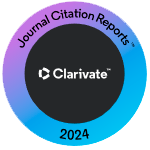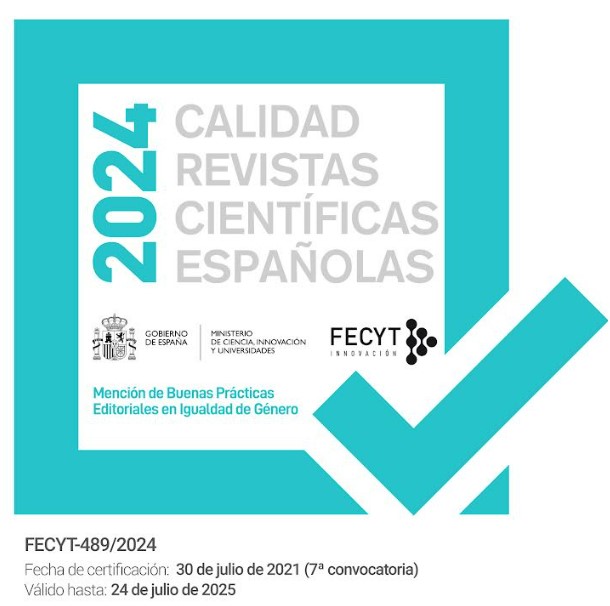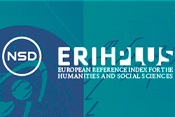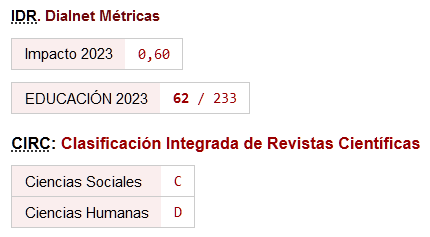Impacto del COVID-19 en la Educación Superior en Pakistán: un estudio exploratorio
DOI:
https://doi.org/10.46661/ijeri.5645Palabras clave:
Pandemia, aprendizaje en línea, interacción, regresiónResumen
El brote del COVID-19 obligó a las Instituciones de Educación Superior (IES) de todo el mundo a continuar sus programas de grado en línea al instante. Siguiendo la tendencia, la Comisión de Educación Superior de Pakistán alentó a las IES a comenzar las clases en línea. Aunque el aprendizaje en línea parecía ser la mejor solución posible durante el cierre indefinido de los institutos, el cambio repentino en el paradigma de enseñanza y aprendizaje no fue bien aceptado y surgieron desafíos sin precedentes. Este estudio tiene como objetivo identificar las barreras específicas para estudiantes y profesores en este cambio abrupto. Además, examina el nivel de satisfacción de los estudiantes de pregrado con las prácticas de educación en línea durante la epidemia del COVID-19. El estudio empleó un diseño de encuesta y lo llevó a cabo a través de dos cuestionarios distintos para estudiantes y profesores. Un total de 1280 estudiantes participaron en el cuestionario de los estudiantes, mientras que 112 maestros contribuyeron a completar la encuesta de docentes. La calidad del contenido (CQ), la disponibilidad del contenido (CA), la interacción del maestro (TI) y el modo de impartición de la conferencia (MLD) se consideraron como variables predictoras de la satisfacción del estudiante. Se realizaron análisis de regresión y correlación para conocer la contribución de las variables mencionadas. Los resultados de la encuesta concluyeron que la falta de interacción entre estudiantes y profesores es el principal obstáculo en el aprendizaje en línea. Los resultados de la regresión revelaron que el modelo general con los cuatro predictores fue significativamente predictivo de la satisfacción de los estudiantes. Los resultados revelaron además que MLD es el más fuerte y significativo de todos. Creemos que los hallazgos de este estudio pueden proporcionar información beneficiosa para mejorar el cambio de paradigma con mayor eficiencia en esta pandemia.
Descargas
Citas
Ali, A., Ramay, M. I., & Shahzad, M. (2011). Key factors for determining student satisfaction in distance learning courses: A study of Allama Iqbal Open University (AIOU) Islamabad, Pakistan. Turkish Online Journal of Distance Education, 12(2), 114–127. https://doi.org/10.17718/tojde.10766
Alqurashi, E. (2019). Predicting student satisfaction and perceived learning within online learning environments. Distance Education, 40(1), 133–148. https://doi.org/10.1080/01587919.2018.1553562
Baber, H. (2020). Determinants of Students’ Perceived Learning Outcome and Satisfaction in Online Learning during the Pandemic of COVID-19. Journal of Education and E-Learning Research, 7(3), 285–292.
CDC. (2020). How to Protect Yourself; Others | CDC. https://www.cdc.gov/coronavirus/2019-ncov/prevent-getting-sick/prevention.html
Chen, T., Peng, L., Yin, X., Rong, J., Yang, J., & Cong, G. (2020). Analysis of User Satisfaction with Online Education Platforms in China during the COVID-19 Pandemic. Healthcare, 8(3), 200. https://doi.org/10.3390/healthcare8030200
Demuyakor, J. (2020). Coronavirus (COVID-19) and Online Learning in Higher Institutions of Education: A Survey of the Perceptions of Ghanaian International Students in China. Online Journal of Communication and Media Technologies, 10(3), e202018. https://doi.org/10.29333/ojcmt/8286
ECW. (2020). COVID-19 AND EDUCATION IN EMERGENCIES - educationcannotwait. https://www.educationcannotwait.org/covid-19/
Haelle, T. (n.d.). Why Everything Is Closing For Coronavirus: It’s Called ‘Flattening The Curve.’ Retrieved July 16, 2020, from https://www.forbes.com/sites/tarahaelle/2020/03/13/why-everything-is-closing-for-coronavirus-its-called-flattening-the-curve/#d4b99b86e2b1
Hahn, B. (n.d.). How people learn best: Active vs Passive Learning – The Learning Hub. Retrieved July 16, 2020, from https://learninghub.openlearning.com/2018/12/10/how-people-learn-best-active-vs-passive-learning/
Harasim, L. (2000). Shift happens: online education as a new paradigm in learning. The Internet and Higher Education, 3(1–2), 41–61. https://doi.org/10.1016/S1096-7516(00)00032-4
Hill, P. (2012, November). Online Educational Delivery Models: A Descriptive View. EDUCAUSE Review. http://www.learntechlib.org/p/113883/
Joksimović, S., Gašević, D., Loughin, T. M., Kovanović, V., & Hatala, M. (2015). Learning at distance: Effects of interaction traces on academic achievement. Computers & Education, 87, 204–217. https://doi.org/10.1016/J.COMPEDU.2015.07.002
Karada, E. (2020). Coronavirus Pandemic : An Evaluation Study for Undergraduate Students. Journal of Higher Education (Turkey), 1–12. https://doi.org/10.2399 / yod.20.730688
Kuo, Y.-C., & Belland, B. R. (2016). An exploratory study of adult learners’ perceptions of online learning: Minority students in continuing education. Educational Technology Research and Development, 64(4), 661–680. https://doi.org/10.1007/s11423-016-9442-9
Kuo, Y. C., Walker, A. E., Schroder, K. E. E., & Belland, B. R. (2014). Interaction, Internet self-efficacy, and self-regulated learning as predictors of student satisfaction in online education courses. Internet and Higher Education, 20, 35–50. https://doi.org/10.1016/j.iheduc.2013.10.001
Kuo, Y., Walker, A. E., Belland, B. R., & Schroder, K. E. E. (2013). A predictive study of student satisfaction in online education programs | Kuo | The International Review of Research in Open and Distributed Learning. The International Review of Research in Open and Distance Learning, 14(1). http://www.irrodl.org/index.php/irrodl/article/view/1338/2416
Lee, J.-W. (2010). Online support service quality, online learning acceptance, and student satisfaction. The Internet and Higher Education, 13(4), 277–283. https://doi.org/10.1016/j.iheduc.2010.08.002
Li, Q., & Akins, M. (2005). Sixteen myths about online teaching and learning in higher education: Don’t believe everything you hear. TechTrends, 49(4), 51–60. https://link.springer.com/content/pdf/10.1007/BF02824111.pdf
Liang, R., & Victor, D.-T. (2012). Online Learning: Trends, Potential and Challenges. Creative Education, 3(8), 1332–1335. https://doi.org/http://dx.doi.org/10.4236/ce.2012.38195
Liu, W., Peiris, R., Choi, Y., Cheok, A. D., Mei-Ling, C. L., Theng, Y.-L., Nguyen, T. H. D., Qui, T. C. T., & Vasilakos, A. V. (2009). Internet-enabled user interfaces for distance learning. International Journal of Technology and Human Interaction (IJTHI), 5(1), 51–77.
Martin, F., Sun, T., & Westine, C. D. (2020). A systematic review of research on online teaching and learning from 2009 to 2018. Computers & Education, 159, 104009. https://doi.org/10.1016/J.COMPEDU.2020.104009
Means, B., Neisler, J., & Associates, L. R. (2020). Suddenly Online: A National Survey of Undergraduates During the COVID-19 Pandemic. Digital Promise. https://digitalpromise.dspacedirect.org/handle/20.500.12265/98
Moore, J. C. (2005). The Sloan Consortium Quality Framework And The Five Pillars. The Sloan Consortium.
Moore, M. G. (1989). Editorial: Three types of interaction. American Journal of Distance Education, 3(2), 1–7. https://doi.org/10.1080/08923648909526659
Pakistan Today. (2020). HEC orders all universities to begin online classes | Pakistan Today. https://www.pakistantoday.com.pk/2020/03/30/hec-orders-universities-begin-online-classes/
Restauri, S. L., King, F. L., & Nelson, J. G. (2001). Assessment of Students’ Ratings for Two Methodologies of Teaching via Distance Learning: An Evaluative Approach Based on Accreditation. https://eric.ed.gov/?id=ED460148
Routman, R. (2005). Writing essentials : raising expectations and results while simplifying teaching. Heinemann. https://books.google.com.pk/books/about/Writing_Essentials.html?id=3nfuAAAAMAAJ&redir_esc=y
Sahu, P. (2020). Closure of Universities Due to Coronavirus Disease 2019 (COVID-19): Impact on Education and Mental Health of Students and Academic Staff. Cureus, 12(4), e7541. https://doi.org/10.7759/cureus.7541
Sears, C. R., Boyce, M. A., Boon, S. D., Goghari, V. M., Irwin, K., & Boyes, M. (2017). Predictors of student satisfaction in a large psychology undergraduate program. Canadian Psychology/Psychologie Canadienne, 58(2), 148–160. https://doi.org/10.1037/cap0000082
Shuey, S. (2002). Assessing Online Learning in Higher Education. Journal of Instruction Delivery Systems, 16(2). https://eric.ed.gov/?id=EJ657776
Tobin, & J, T. (2004). Best Practices for Administrative Evaluation of Online Faculty. Online Journal of Distance Learning Administration, 7(2). https://www.westga.edu/~distance/ojdla/summer72/tobin72.html
Visser, J. A. (2000). Faculty work in developing and teaching web‐based distance courses: A case study of time and effort. American Journal of Distance Education, 14(3), 21–32. https://doi.org/10.1080/08923640009527062
World Health Organization. (2019). Coronavirus disease (COVID-19). https://www.who.int/emergencies/diseases/novel-coronavirus-2019
World Health Organization. (2020a). Protective measures Covid19 - Stay Healthy at Home. https://www.who.int/southeastasia/outbreaks-and-emergencies/novel-coronavirus-2019/protective-measures/stay-healthy-at-home
World Health Organization. (2020b). WHO Director-General’s opening remarks at the media briefing on COVID-19 - 11 March 2020. https://www.who.int/dg/speeches/detail/who-director-general-s-opening-remarks-at-the-media-briefing-on-covid-19---11-march-2020
Zeidner, R. (n.d.). Coronavirus Makes Work from Home the New Normal. Retrieved August 20, 2020, from https://www.shrm.org/hr-today/news/all-things-work/pages/remote-work-has-become-the-new-normal.aspx
Descargas
Publicado
Cómo citar
Número
Sección
Licencia
Derechos de autor 2021 Tehreem Qamar Qamar, Narmeen Zakaria Bawany

Esta obra está bajo una licencia internacional Creative Commons Atribución-NoComercial-SinDerivadas 4.0.
















